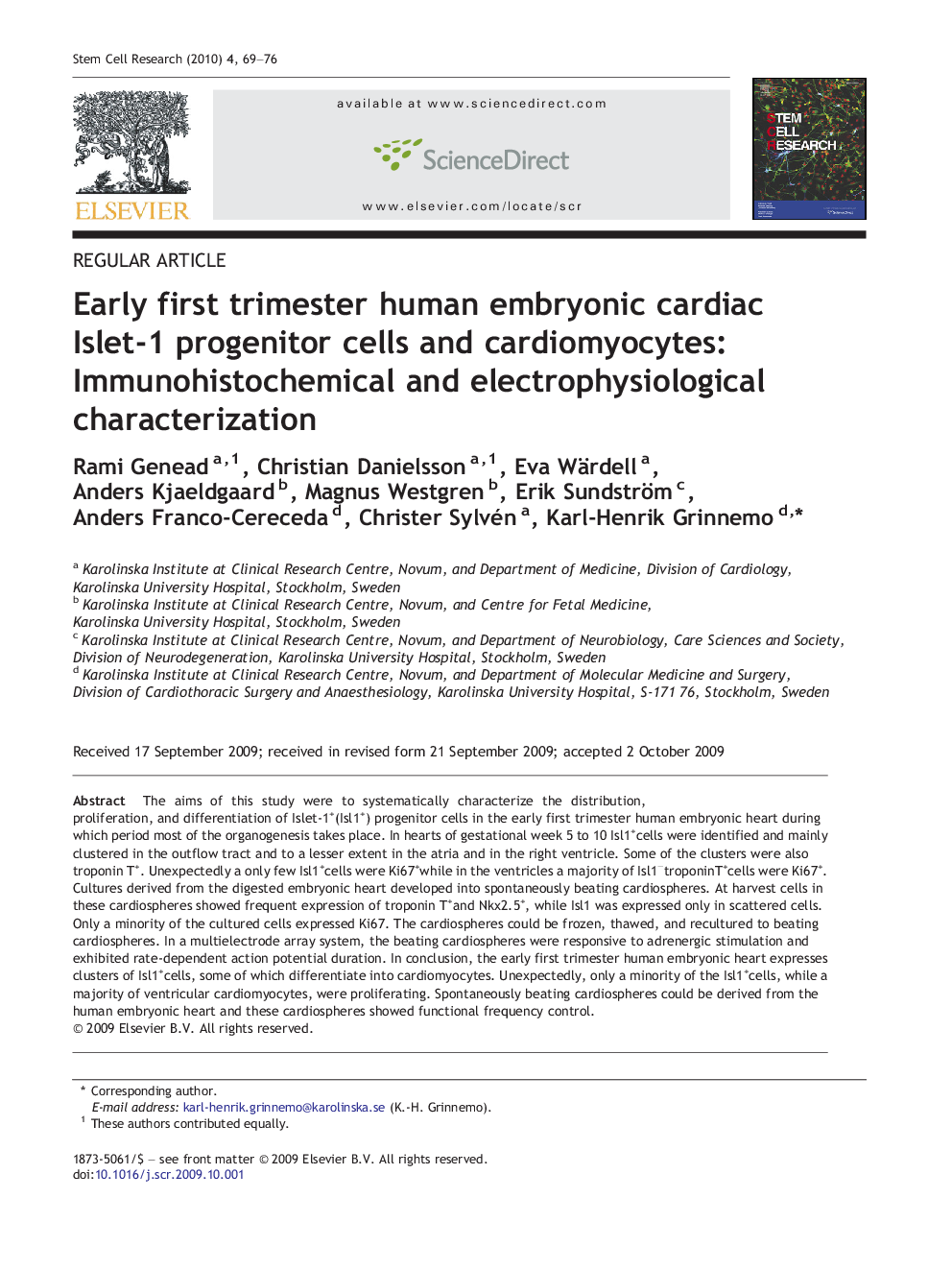| Article ID | Journal | Published Year | Pages | File Type |
|---|---|---|---|---|
| 2094501 | Stem Cell Research | 2010 | 8 Pages |
The aims of this study were to systematically characterize the distribution, proliferation, and differentiation of Islet-1+(Isl1+) progenitor cells in the early first trimester human embryonic heart during which period most of the organogenesis takes place. In hearts of gestational week 5 to 10 Isl1+cells were identified and mainly clustered in the outflow tract and to a lesser extent in the atria and in the right ventricle. Some of the clusters were also troponin T+. Unexpectedly a only few Isl1+cells were Ki67+while in the ventricles a majority of Isl1−troponinT+cells were Ki67+. Cultures derived from the digested embryonic heart developed into spontaneously beating cardiospheres. At harvest cells in these cardiospheres showed frequent expression of troponin T+and Nkx2.5+, while Isl1 was expressed only in scattered cells. Only a minority of the cultured cells expressed Ki67. The cardiospheres could be frozen, thawed, and recultured to beating cardiospheres. In a multielectrode array system, the beating cardiospheres were responsive to adrenergic stimulation and exhibited rate-dependent action potential duration. In conclusion, the early first trimester human embryonic heart expresses clusters of Isl1+cells, some of which differentiate into cardiomyocytes. Unexpectedly, only a minority of the Isl1+cells, while a majority of ventricular cardiomyocytes, were proliferating. Spontaneously beating cardiospheres could be derived from the human embryonic heart and these cardiospheres showed functional frequency control.
